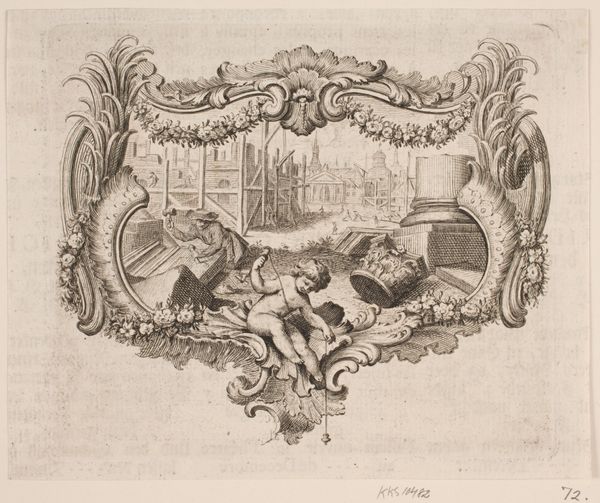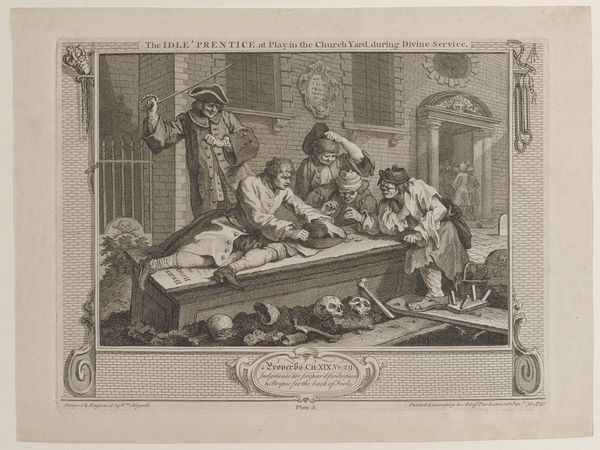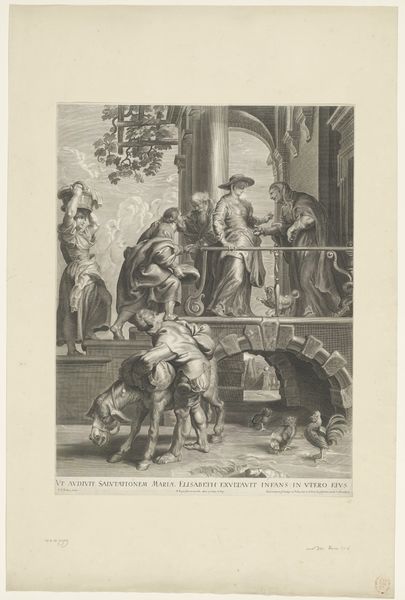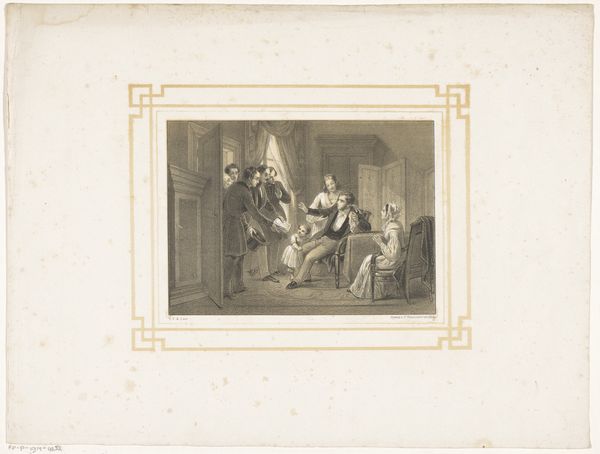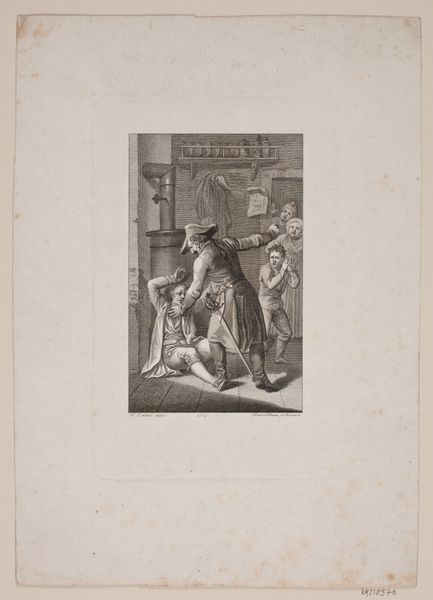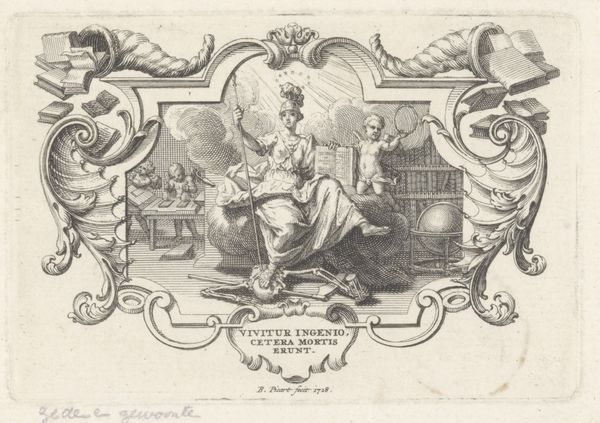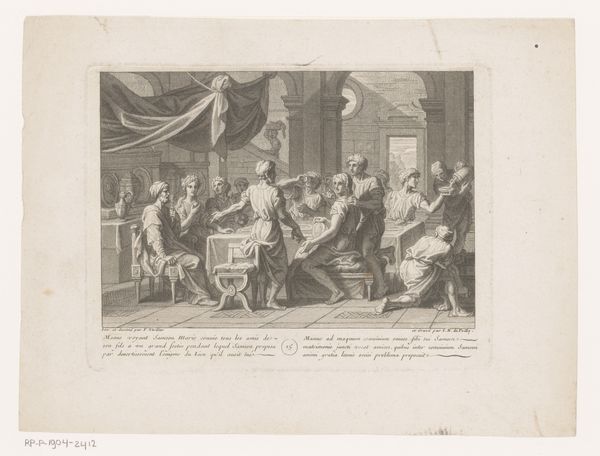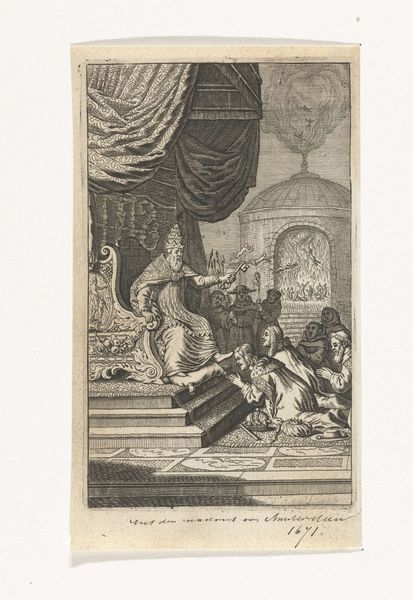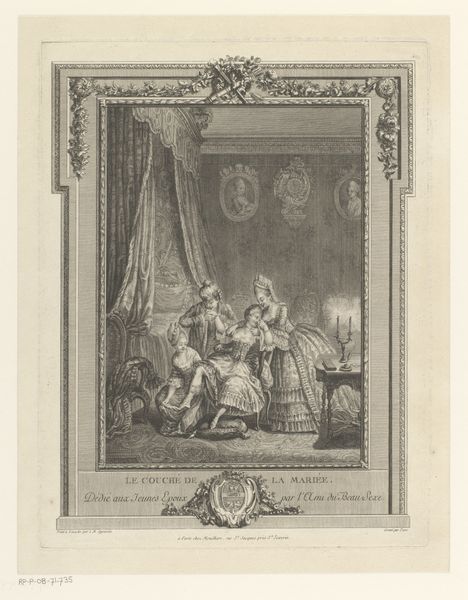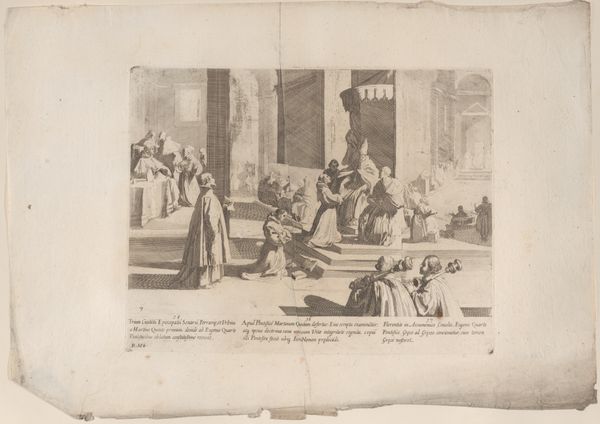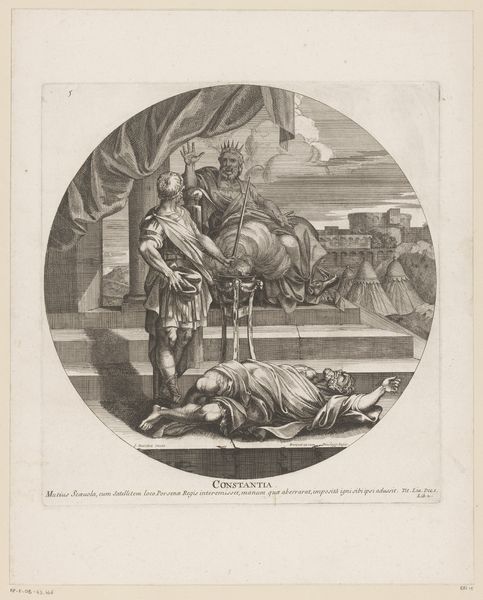
Vignet til Lauritz de Thurah's, "Hafnia Hodierna, Eller Udførlig Beskrivelse om den Kongelige Residentz- og Hoved-Stad Kiøbenhavn", 1748 1748
0:00
0:00
print, engraving
#
baroque
# print
#
cityscape
#
history-painting
#
engraving
Dimensions: 103 mm (height) x 212 mm (width) (bladmaal)
Michael Keyl created this vignette for Lauritz de Thurah's book on Copenhagen in 1748 using an engraving technique. This intaglio printmaking process involves incising an image onto a metal plate, inking the recesses, and pressing the plate against paper. The material quality of the print – its crisp lines and tonal range – are direct results of the engraver's skill. The artisan carefully cut the lines into the metal, a labor-intensive task that demanded precision and control. The image itself, depicting allegorical figures amidst Copenhagen’s architecture, speaks to the city’s aspirations of grandeur and enlightenment. Engraving, like other printmaking methods, played a crucial role in disseminating knowledge and shaping public opinion. In a pre-photographic era, prints were vital for circulating images and ideas. The labor invested in this small vignette reflects the broader social and economic context of 18th-century Europe, where skilled craftsmanship and artistic production were intertwined with commerce and cultural exchange. This challenges conventional distinctions between fine art, craft, and industry, inviting us to appreciate the rich layers of meaning embedded within the object's making.
Comments
No comments
Be the first to comment and join the conversation on the ultimate creative platform.
